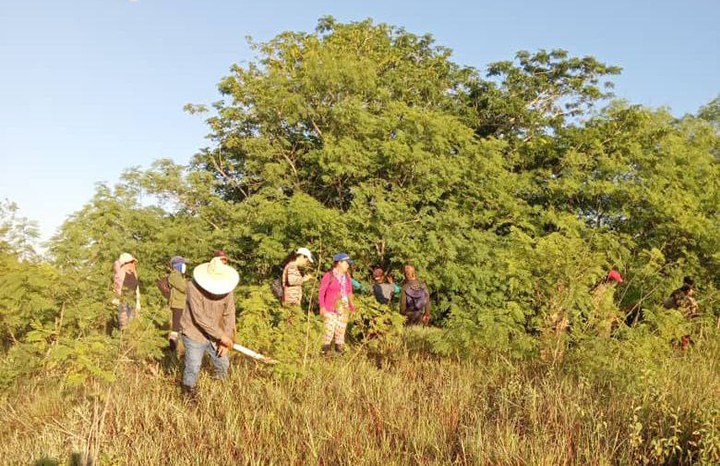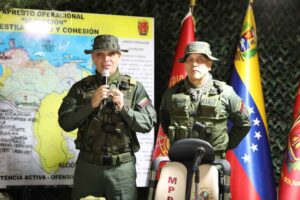The rehabilitation of plant formations in the coastal wetland in the south of the province of Ciego de Avila, as part of the actions of the international project Mi Costa, will conserve biological diversity and strengthen resilience to climate change.
Alejandro Gónzalez Díaz, coordinator of the global initiative in the territory of Avila, told the Cuban News Agency that this task, carried out by workers of the Unidad Empresarial de Base Agroforestal of the municipality of Venezuela, is being executed according to a schedule that will enable the progressive transformation of 673 hectares of mangroves, 835 hectares of forests and a similar amount of marsh grasslands.
The area near the area known as El Dragado, in the vicinity of the community of Júcaro, benefits from the elimination of invasive exotic species (IAS) that proliferated destructively, posing a risk to natural stability and the interests of human beings, he explained.
He argued that biological invasions are an environmental problem and the second cause of species extinction, second only to habitat loss and degradation, which represents a major challenge to preserve biodiversity.
IAS are a serious threat to coastal ecosystems by displacing native plants and altering ecological processes; consequently, Mi Costa contemplates actions to manage natural regeneration and planting to recover the structure, functions and services of that environment.
Restoration includes enrichment planting and reintroduction of key mangrove species, as well as hydrological management to ensure water availability for vegetative development.
As part of the protocol, Mi Costa aims to eradicate IAS, contribute to the improvement of the health and biodiversity of the coastal ecosystem, prevent the reintroduction of alien plants, promote the sustainable use of biomass derived from extractions in the area, and raise awareness among stakeholders and the community of these actions to safeguard biodiversity.
The coastal strip will be favoured with plantations of different varieties of mangrove (red, black, yana and pataban), and in the marsh forests it is planned to establish around 60 native species, including varieties of júcaro, a tree that is a local landmark, but with a scarce presence in the vegetation.
González Díaz stressed that the list of species allowed for enrichment planting was drawn up on the basis of the specific characteristics of the coastal ecosystem and considered criteria such as adaptability to hydrological and soil conditions, ability to thrive in an anthropised area, resistance to expected climatic extremes and potential to restore necessary ecosystem services.
The assembly of a nursery, with modern technology, will guarantee the reproduction of native plant varieties to increase the forest cover in the southern wetland, added the coordinator of this international project in Ciego de Avila.
As part of the environmental and social safeguards procedure, the Mi Costa team previously carried out studies to identify and evaluate the potential impact of the project on the environment and the community, which will avoid irreversible damage to the environment and its inhabitants, in addition to promoting sustainable development that respects the needs and rights of people and the planet.
They detected the potential risks for the rehabilitation work, from which they established management plans, protocols and methodologies to intervene in the different spaces and components of the landscape, so that the techniques would mitigate the probable damage to the ecosystem and biodiversity, González Díaz said.
Implemented by the Environment Agency of the Ministry of Science, Technology and Environment, with the advice of the United Nations Development Programme, Mi Costa has provided the equipment, tools and safety conditions for forestry workers to carry out these tasks with the required agility and quality, in order to increase the resilience of the ecosystem and favour adaptation to climate change.
Over an eight-year implementation period, this international initiative aims to rehabilitate the coastal wetland through natural and assisted regeneration actions in mangroves, swamp forests and grasslands, which will help to restore the functionality of the ecosystem.
It envisages the improvement of specific areas, reforestation with key species and the creation of conditions to ensure sustainability, including protection measures in this environment.
Mi Costa will contribute to strengthening resilience to climate change in 1,300 kilometres of Cuba’s southern coastline, distributed in two sections of the western and central-eastern zones, and will benefit inhabitants of 24 municipalities, seven provinces and an equal number of settlements near the sea, considering that the interventions will lead to higher quality of ecosystem services and, therefore, will raise living standards.
In addition to technical actions, also aimed at counteracting coastal erosion, reducing saline intrusion and minimising the impacts of sea penetration and strong winds associated with extreme hydro-meteorological events, an extensive training programme will be developed in premises equipped to provide lessons that will increase the response of the inhabitants to the effects of a changing climate.




